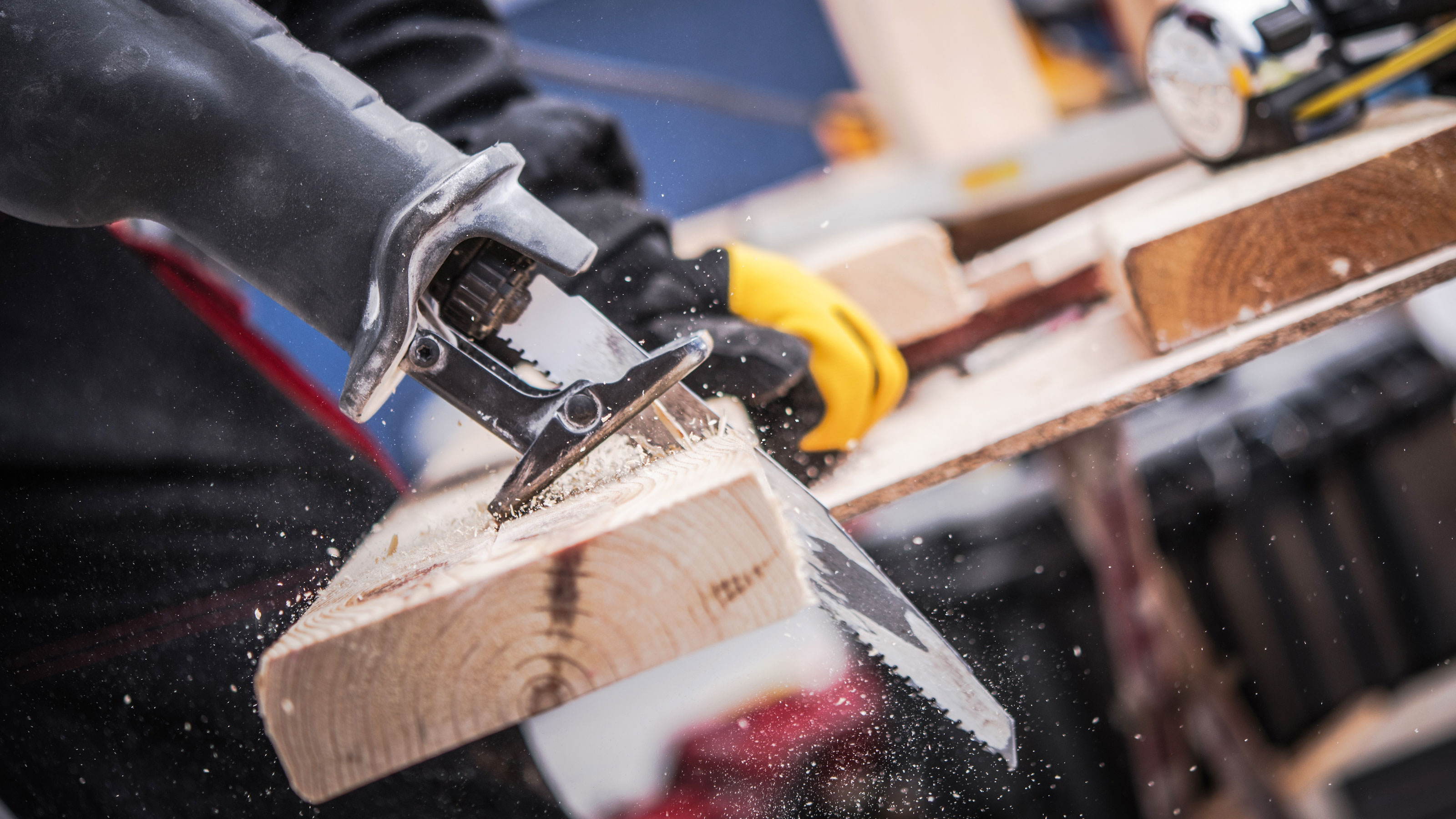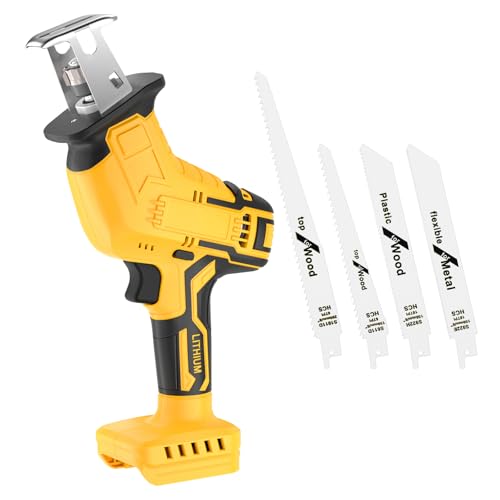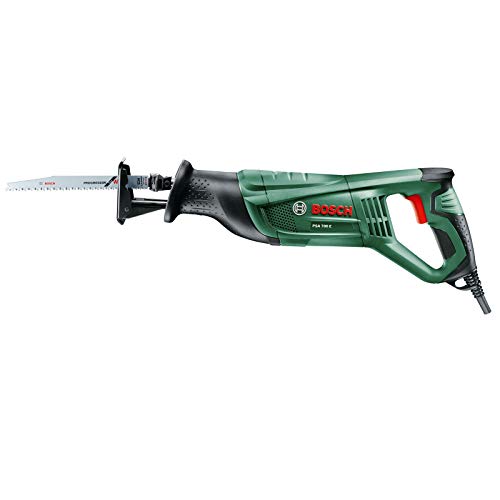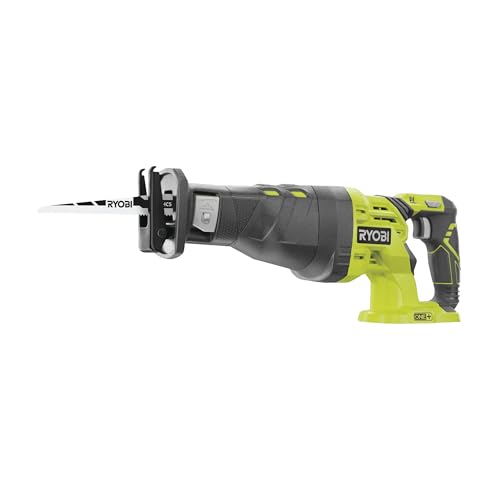What is a reciprocating saw? Why you might need to buy one for your DIY projects
Demolition, remodelling or rough cutting, a reciprocating saw is crucial for all of these jobs. We provide the lowdown on choosing, using and optimising a reciprocating saw

Reciprocating saws aren’t in everyone’s toolbox, but they really should be.
Tough, adaptable, and surprisingly precise when used correctly, these power tools can handle everything from trimming wood and cutting metal pipes to full-scale demolition work.
In this article, we explain what makes them so versatile, how they actually work, and highlight some of the best reciprocating saws worth exploring.
What is a reciprocating saw?
A reciprocating saw is a handheld power tool that cuts using a rapid back-and-forth motion, much like a manual saw but powered for speed and strength.
It’s designed to make light work of materials that would otherwise take much longer with hand tools. Corded models provide consistent power for longer tasks, while cordless versions are favoured for their flexibility and ease of movement around the job site.
These saws aren’t for delicate joinery or fine woodworking. They’re made for controlled demolition and quick, efficient cutting - tearing through timber, plasterboard, metal or even plastic piping when other saws simply can’t cope.
What are reciprocating saws used for?
Reciprocating saws are among the most useful tools for remodelling, renovation and demolition work.
Bring your dream home to life with expert advice, how to guides and design inspiration. Sign up for our newsletter and get two free tickets to a Homebuilding & Renovating Show near you.
They make it easy to remove stud walls, window frames and joists or slice through old fixings and plasterboard during refurbishment.
Plumbers and electricians also rely on them to cut through pipework, conduit and cable trays without having to dismantle large sections of a wall or floor.
For example, the Makita DJR186Z 18V Reciprocating Saw is a popular choice for UK tradespeople. It delivers fast, clean cuts with an adjustable shoe and variable speed control, making it equally at home cutting timber, metal or plastic.
Best reciprocating saws
What’s the difference between a reciprocating saw and a jigsaw?
While both tools use a sawing action, a reciprocating saw’s blade extends horizontally from the body of the tool, whereas a jigsaw’s blade moves vertically beneath a flat baseplate.
The result is two very different cutting experiences. A jigsaw is designed for accuracy - perfect for curved lines, shapes and fine finishes making it a good tool for laminate flooring.
A reciprocating saw, on the other hand, is all about raw power, removing material quickly and cutting in areas where other saws can’t reach.
A compact, durable model such as the Bosch GSA 18V-LI Professional Reciprocating Saw is a great example of that power-focused design, capable of slicing through timber beams and metal tubing with ease.
How deep can a reciprocating saw cut?
The depth of cut depends on both the blade length and the material being worked on. Blades generally range between 75mm and 300mm in length, though most DIYers and tradespeople find 150mm or 230mm blades cover nearly all jobs.
You shouldn’t attempt to cut material thicker than your blade length - around 250mm maximum - as this risks overheating the motor and dulling the blade prematurely.
A high-performance cordless option like the DeWalt DCS380N 18V XR Reciprocating Saw offers enough stroke length and torque to handle deeper cuts in dense timber or metal without slowing down.
Are all reciprocating saw blades the same?
Most reciprocating saws use a universal blade fitting, which means you can swap blades between different brands. However, choosing the right blade for the job is key to performance and safety.
- High Carbon Steel (HCS) blades are flexible and ideal for softer materials like wood or plastic.
- Bi-metal blades combine flexibility with heat resistance, perfect for cutting nails or light metals.
- Carbide-tipped blades stay sharper longer and can handle more abrasive materials.
- Diamond-tipped blades are used by professionals for cutting through masonry, ceramics and glass.
A reliable all-rounder such as the Ryobi One+ 18V Cordless Reciprocating Saw can work with all these blade types, making it a smart investment for varied projects.
What blade sizes are available?
Reciprocating saw blades come in a range of lengths from 75mm to 300mm. The most popular are 150mm and 230mm, offering a good balance of reach and rigidity.
Shorter blades tend to be stiffer and give more control, while longer ones can flex slightly but allow you to cut deeper into material.
Choosing the right length is as much about comfort and control as it is about cutting capacity.
What does TPI mean and why is it important?
TPI stands for “teeth per inch”, and it determines how aggressive or smooth your cut will be. Low TPI blades (around 3–8 teeth per inch) are great for fast, rough cuts in wood, while high TPI blades (14–24) are slower but give cleaner cuts in metals and plastics.
For general renovation or demolition work, a mid-range blade is often the most practical choice.
If you need a saw that can handle tough materials with a lower TPI blade, the Milwaukee M18 BSX-0 Reciprocating Saw is built for demanding site conditions and heavy-duty demolition tasks.
Reciprocating saws are powerful, versatile tools that thrive in demanding environments where precision takes second place to performance.
Whether you’re cutting through old timber, dismantling fittings, trimming pipes or reshaping plasterboard, a good reciprocating saw saves time and effort on every job.
Steve Jenkins is a freelance content creator with over two decades of experience working in digital and print and was previously the DIY content editor for Homebuilding & Renovating.
He is a keen DIYer with over 20 years of experience in transforming and renovating the many homes he has lived in. He specialises in painting and decorating, but has a wide range of skills gleaned from working in the building trade for around 10 years and spending time at night school learning how to plaster and plumb.
He has fitted kitchens, tiled bathrooms and kitchens, laid many floors, built partition walls, plastered walls, plumbed in bathrooms, worked on loft conversions and much more. And when he's not sure how to tackle a DIY project he has a wide network of friends – including plumbers, gas engineers, tilers, carpenters, painters and decorators, electricians and builders – in the trade to call upon.




